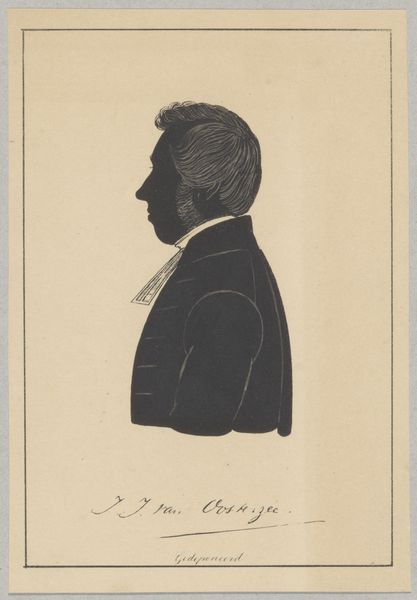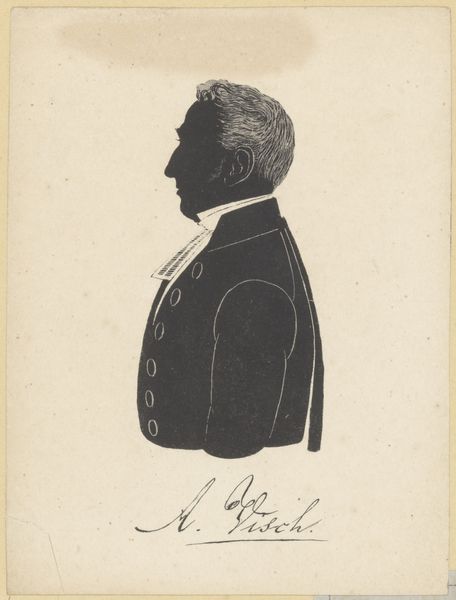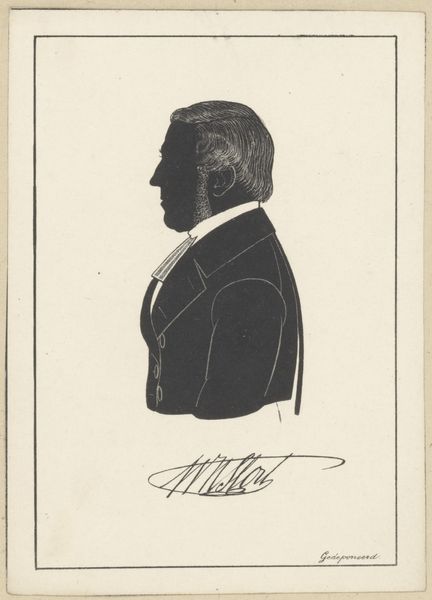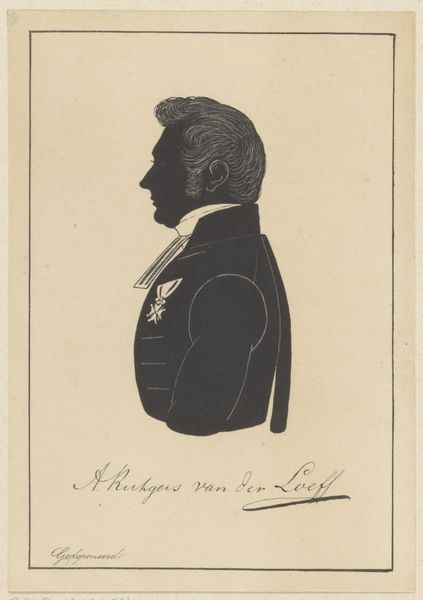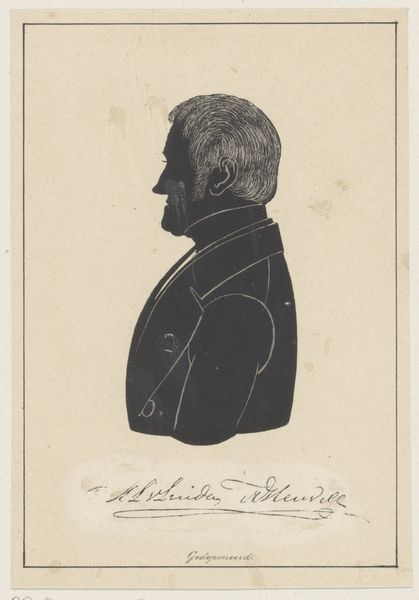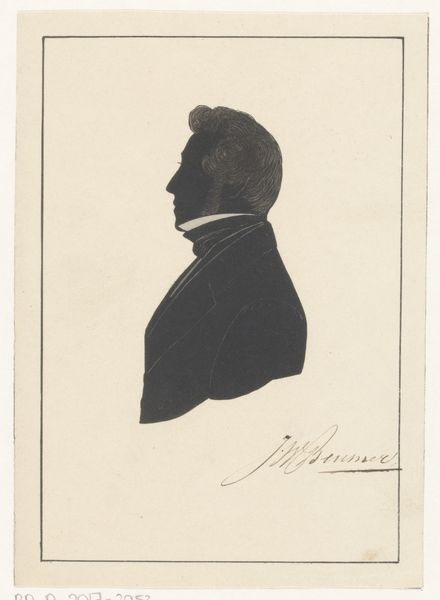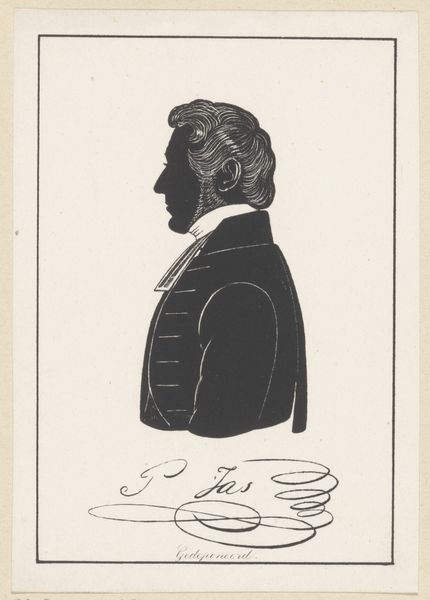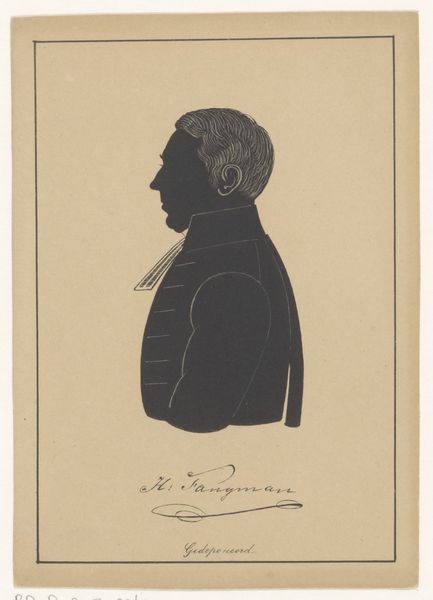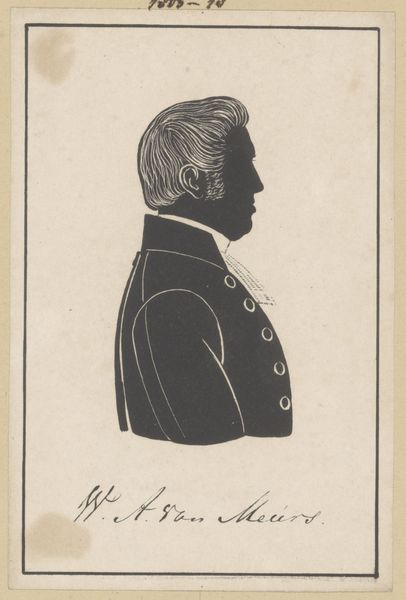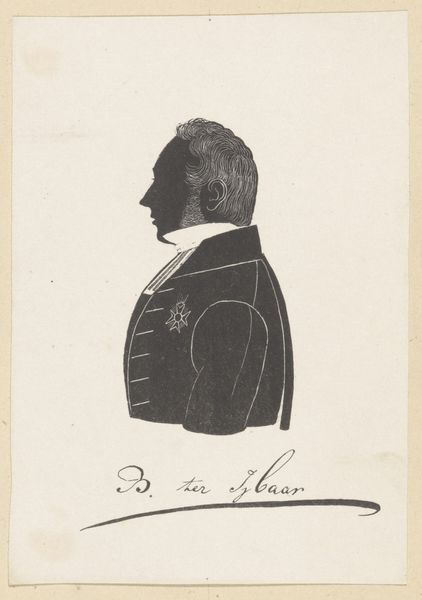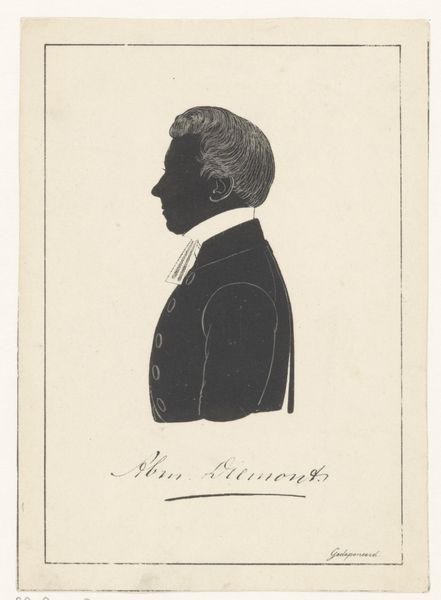
drawing, paper, pencil
#
portrait
#
pencil drawn
#
drawing
#
paper
#
romanticism
#
pencil
Dimensions: height 151 mm, width 105 mm
Copyright: Rijks Museum: Open Domain
Editor: This is "Silhouetportret van Jan Visscher," a silhouette portrait by Pieter Barbiers IV, dating sometime between 1809 and 1848. It’s a pencil drawing on paper, currently at the Rijksmuseum. I'm struck by the starkness of it. It feels very formal, almost severe. What stands out to you in this work? Curator: The silhouette itself carries a strong symbolic weight. Think about it: reducing someone to a shadow, an outline. It’s a powerful act of reduction, but also preservation. In psychological terms, it speaks to how we create internal representations of people, boiled down to essential forms, iconic shapes. Do you think this flattening dematerializes him or rather distills his cultural relevance? Editor: That's fascinating. I hadn't considered the psychological aspect. I guess I assumed silhouettes were simply a quicker, cheaper way to have a portrait made, a kind of proto-photograph. Curator: True, but the black and white also evokes a certain sense of finality, doesn't it? A sense of memory. During the Romantic era, this connects to an emerging interest in folk traditions, in ghosts and spirits. A silhouette captures a person at a specific moment, holding a particular meaning while alive that can still evolve generations later, like ancestral veneration. Editor: I see what you mean. The shape itself becomes a symbol, a kind of shorthand for the individual. Curator: Exactly. It begs the question: What aspects of a person do we choose to remember? The artist here makes several conscious choices regarding which facets of this person, Jan, will endure symbolically through visual imagery. It prompts consideration on what facets of our selves we might choose to be known for and memorialized by. Editor: I hadn't thought of silhouettes in such depth before, beyond just a simple portrait. Thanks for pointing out all of the different historical and cultural references present within this artwork. Curator: It goes to show you that simplicity can conceal profound meaning, with images as gateways for deep cultural memory.
Comments
No comments
Be the first to comment and join the conversation on the ultimate creative platform.
